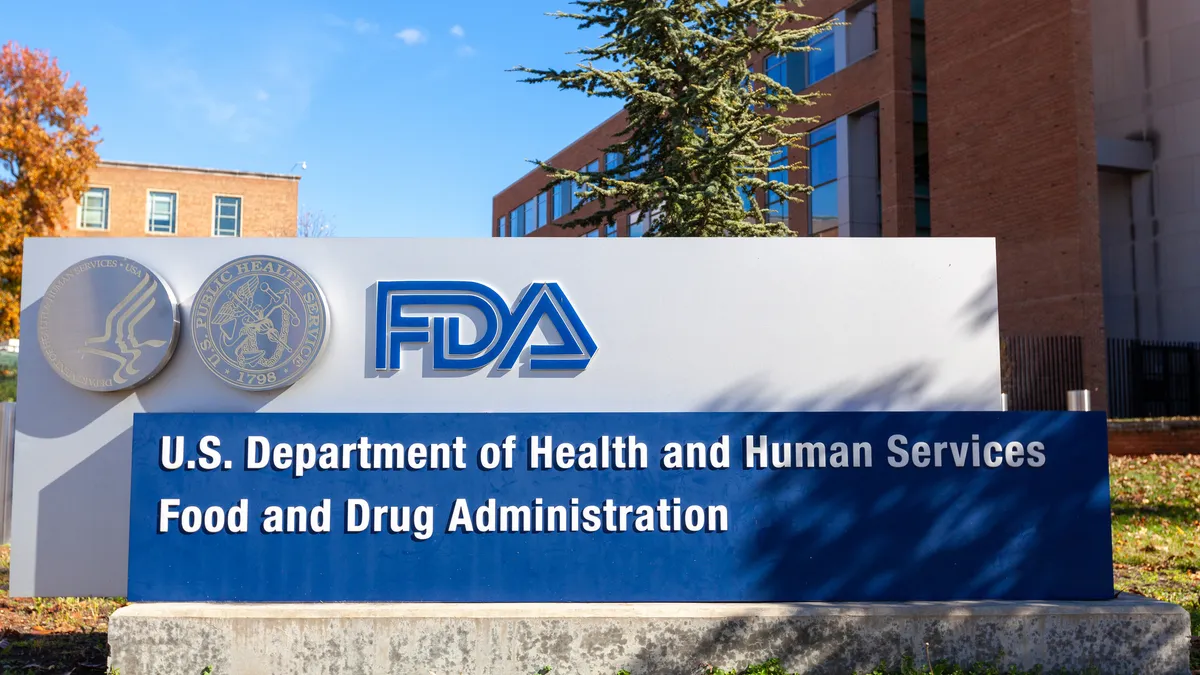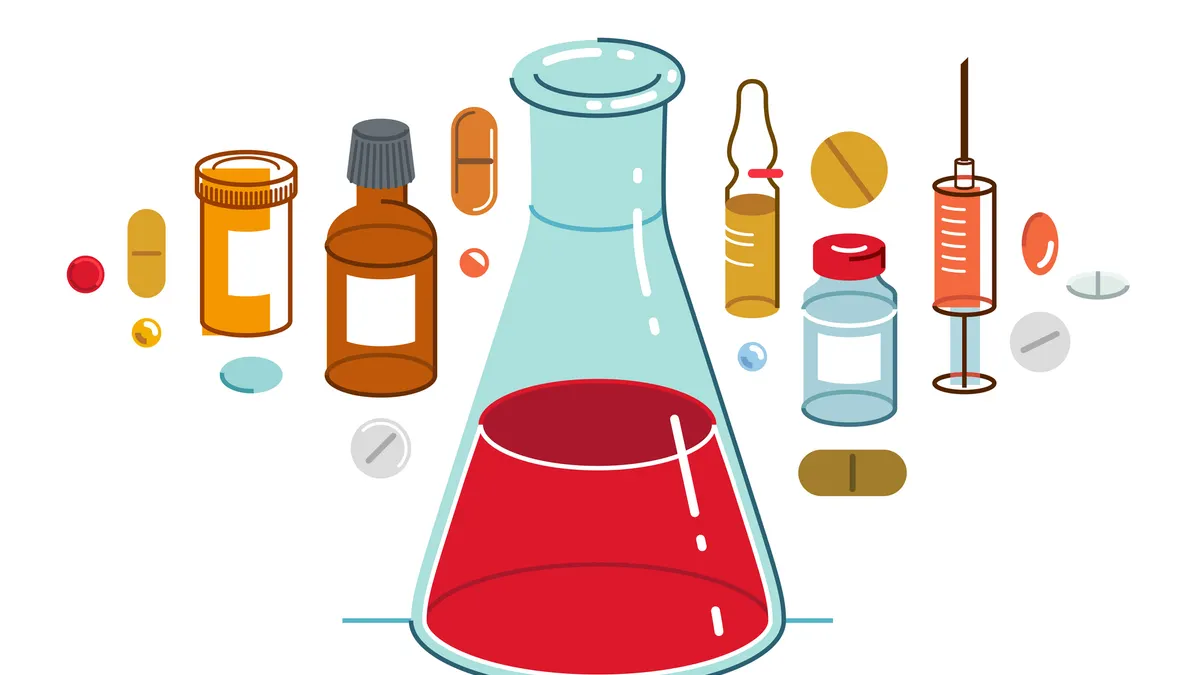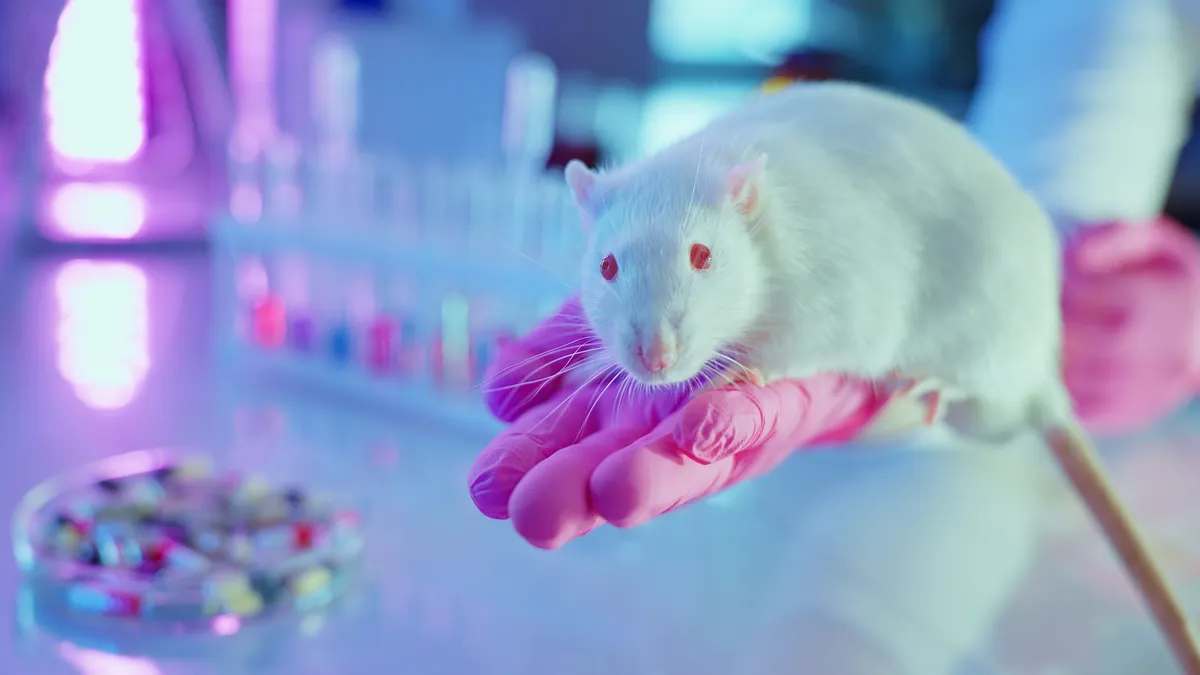Academic medical centers have a renewed interest in partnering with pharmaceutical companies and are investing resources to ensure successful collaborations.
Industry partnerships with universities are changing. These collaborations are no longer about single projects. They are broader in scope, with the goal of translating basic science into potential products or addressing target identification and evaluation. And how companies are working with universities is changing as well. Collaborations with universities are beginning to include precompetitive assets as well as risk sharing with partners that have complementary resources, technologies, and skills.
“Recently, there has been a shift in pharma thinking and a shift in academic thinking, which has led to this unheralded period where companies want to collaborate more significantly with academia," says Reg Seeto, M.D., VP and head of partnering and strategy at MedImmune, the global biologics research and development arm of AstraZeneca.
Leading companies such as Pfizer, Lilly, Bristol-Myers Squibb, and AstraZeneca have made partnering with academia a priority. For MedImmune and AstraZeneca, specifically, partnerships with academic organizations are a big part of the companies’ strategy as science-based organizations.
The industry has become a lot more aware of what academic centers can bring to drug development, says Sy Pretorius, M.D., chief scientific officer, corporate VP and worldwide head, early phase, at Parexel.
“These collaborations have become more strategic," he says. “These are multiyear deals and some, such as the partnerships that AstraZeneca has, are open innovation models."
Dr. Seeto says because there is a finite number of late-stage assets, the true bets are in early-stage development.
“But these bets require risk, and as a science-based company, we are willing to take smart risks knowing that we are not always going to make the right bets, but we hope by investing early and showing a commitment to our academic institution partners, this will eventually lead to meaningful drugs for patients," he says. “We believe by working together we can accelerate these opportunities for patients."
Brad Thompson, Ph.D., president and CEO of Oncolytics Biotech, says collaborations with academic organizations have become practical and focused on a final product.
“Academic researchers are the best and brightest, and having academic collaborations has allowed us to work with the people who are the best at what we need to accomplish and the collaborative environment allows them to have a free flow of creative thinking," he says.
The world is changing and, despite advances in science, not necessarily for the better.
“For the past 15 years, the pipelines of the big companies have been drying up," says Terrence Norchi, M.D., president and CEO of Arch Therapeutics. “A number of very well-known and large pharmaceutical and biotechnology companies have spent a lot of money on R&D and don’t necessarily have a sufficent return to show for it, especially when they need to simultaneously grow their revenue streams and fill in the revenue holes created by generics. It is very hard to fill those holes and realize the type of growth that current share prices demand. Smaller companies, on the other hand, have funding challenges and have to find a new way to get the work done with less capital. At the same time, there is a tremendous amount of pressure on academic institutions in this country and abroad."
To survive, many universities will have to find creative ways to make themselves more relevant, he says.
“There are opportunities to mutually solve these challenges between academia and industry, especially with small companies."
In July, Arch signed a new agreement with the University College Cork (UCC) School of Pharmacy in Cork, Ireland, of the National University of Ireland (NUI), focusing on development of hemostasis and sealant products. Arch is a medical device company developing a novel approach to stop bleeding and control leaking during surgery and trauma care.
Arch has developed a network of European and American collaborators in academic institutions and industry. This collaboration extends a successful multi-year relationship between Arch and institutions within NUI. Arch leadership, technology, and resources have combined with Irish academic institutional scientists and assets to drive product development.
Dr. Norchi predicts partnerships will continue at an increasing pace around the globe.
“We are going to see more and more partnerships with institutions that historically are not as well known for medical research, but have the resources to enter or more deeply penetrate the field, such as certain state universities and schools in Europe, Latin America, and Asia," he says.
“You can find very highly skilled, highly qualified folks at institutions that are not as expensive to work with because of where they are located geographically," he says. “The going rates of labor in many of those regions, plus the additional charged overhead can be more palatable," he says. “I have seen a three- and four-fold difference in the cost of collaborations among institutions for comparable bodies of work."
Dr. Pretorius says there is a lot of support now with universities for broader collaborations that may be specifically disease focused or that address the basic science component of the disease, target evaluation, and target identification.
“Academic groups have become a lot more streamlined," he says. “Most of the universities around the globe now have a supporting infrastructure around IP/tech transfer and helping researchers."
Collaborations at Work
The trend toward increased collaborations is being driven by several factors, Dr. Pretorius says.
“One is the complexity associated with many diseases," he says. “As a physician, I’m always amazed at how many of diseases we still don’t (or don’t fully) understand the patho-physiology involved. Groups within academic centers and universities around the world may devote all of their time and attention to studying one component of a disease."
Another factor is cost, Dr. Pretorius says. “Research has become too expensive and complex, and companies find it difficult to maintain all of the required infrastructure in-house," he says.
In parallel, Dr. Seeto says universities have an increased focus on wanting to work with industry in part because of changes in government funding.
“In academia, there is an increased willingness to work with pharma versus the traditional model of just asking for money," he says. “There is a lot of the frustration within academic institutions because so few of their discoveries reach the marketplace. There is now a realization that, although the university may have a tech transfer office, the research doesn’t necessarily go anywhere. Universities want to find better ways of working with industry because the goal is to get drugs approved and to the patients in the fastest way."
Enactment of the Bayh-Dole Act by Congress in 1980 fostered public-private collaborations by promoting the commercialization of government-funded research. And throughout the 1980s and 1990s, the Bayh-Dole Act gave rise to the practice of creating technology transfer offices within the universities to commercialize ideas.
At the same time, companies expanded their collaborations with universities to improve productivity.
But then academic investigators began to face declining research budgets. In the 2000s, the National Institutes Health budget was reduced. In FY 2011, NIH was funded below its FY 2010 level, which resulted in only 18% of all grant applications being approved in FY 2011, the lowest acceptance rate on record at NIH. But now funding is starting to bounce back. The NIH’s budget request of $30.262 billion for 2015 includes an increase of $211 million to fund two high-priority initiatives — the NIH Brain Research through Advancing Innovative Neurotechnologies (BRAIN) Initiative and the Big Data to Knowledge (BD2K) Initiative, according to Francis Collins, M.D., Ph.D., director of the NIH.
A 2012 study from the Tufts Center for the Study of Drug Development reviewed 3,278 grants and compiled the information into a database. They determined that the grant requests fell into three major classifications: joint clinical trial (75%); public health priority studies (14%); and health research and education projects (11%). Of the joint trials, 71% were focused on drug research. At the time of Tufts CSDD’s review, risk-sharing models of collaborations and industry funding pre-competitive research were emerging models for partnerships. Tufts had identified unrestricted research grants, principal investigator contracts, and fee-for-service contracts as the most common partnerships.
Translational Research
The Tufts study found that biopharmaceutical companies increasingly are forming partnerships with academic medical centers to not only identify promising pathways for potential breakthrough therapies through basic research in medicine, but also to guide their translation into clinical development of new medical products.
Dr. Pretorius says collaborations between pharmaceutical companies and academic institutions are particularly well-suited for research to determine if basic science findings translate into therapies for human diseases (translational research).
“Academic centers are particularly well-suited for doing the early work around target discovery and target validation and basic science research," he says. “There is a lot of partnering around the co-development of basic science components of diseases and targets."
Dr. Thompson says Oncolytics Biotech has straddled the line between basic research to clinical research, and the company is working with academic institutions on a number of translational clinical studies to focus on the use of bioinformatics at the molecular level.
“Translational research is the fusion of basic lab work and the clinic and allows us in real time to develop interventions based on real-time data," he says. “We’ve never had this before. This information shortens the time frame to get far more data that are very helpful."
Dr. Seeto says MedImmune’s collaboration with the Clinical and Translational Science Institute (CTSI) at the University of California, San Francisco, is a good example of an effort between industry and academia to help progress good science. The three-year collaboration’s focus is on CTSI’s Catalyst Awards program, which solicits applications from university scientists who wish to move their translational research beyond the bench and into product development.
This marks the first industrial partnership for CTSI’s Catalyst Awards program’s therapeutic track, which focuses specifically on discovery and development of patient treatment options. MedImmune and UCSF are collaborating to move forward some of the most promising research projects over the next three years with the option to extend the partnership. The collaboration is aimed at fostering a scientific exchange and expertise between UCSF and MedImmune scientists, and supports projects that translate research into treatments that improve patient outcomes.
MedImmune also has a three-year translational and clinical research collaboration with The University of Texas MD Anderson Cancer Center to study therapies that unleash patients’ immune systems to attack their cancers through MD Anderson’s Moon Shots Program. MedImmune is conducting clinical trials using a new therapeutic paradigm that targets immune cells to improve their tumor-fighting ability, rather than targeting the tumor cell itself.
Pharma-Academia Partnerships
AstraZeneca’s strategy as a science-based organization focuses on collaborations and scientific exchanges, and Dr. Seeto says every discussion at the company involves science.
“We have a focus on finding the best science," he says. “We know we can’t do it all ourselves internally, and there is so much excellent research externally, especially within academia. For us, it’s absolutely critical to work with the leading experts in their fields of research to drive the development of innovative therapeutics. We are driven by the goal of getting innovative drugs to patients and not by the fact that the drugs have to be invented here."
AstraZeneca has several collaborations with academic organizations that fit this new model of collaboration. In June, the company announced a collaboration with the Academic Drug Discovery Consortium (ADDC) to provide ADDC members with access to a high-quality compound library. The ADDC comprises more than 100 university-led drug discovery centers and more than 1,000 individual members from 35 countries.
In May, AstraZeneca announced a jointly funded research collaboration with the Medical Research Council Laboratory of Molecular Biology (MRC LMB) to fund a range of preclinical research projects aimed at better understanding the biology of disease. Projects involve scientists from the two organizations working side by side, either within the MRC LMB or at the Cambridge Biomedical Campus. AstraZeneca would contribute up to about £6 million ($10 million) and MRC LMB up to about £3 million ($5 million) over a period of five years.
In February 2014, the company announced a collaboration with the Cancer Research UK (CRUK) Cambridge Institute to temporarily locate up to 60 AstraZeneca scientists in the institute. The CRUK Cambridge Institute, part of the University of Cambridge, is located on the Cambridge Biomedical Campus, the future site of AstraZeneca’s UK-based global strategic research and development center and corporate headquarters.
Additionally, MedImmune has its own biologics-focused collaborations. In April, the University System of Maryland announced that a research collaboration between MedImmune and the University of Maryland, Baltimore, has been expanded to include the University of Maryland, College Park, and the University of Maryland, Baltimore County. The collaborators have identified the first five research projects to be undertaken under the agreement.
This follows the September 2013 announcement in which MedImmune and UMB announced a five-year, $6 million collaboration to drive novel bioscience research.
MedImmune also has a number of research collaborations with academics at the University of Cambridge. One of these is a three-year collaboration to advance cancer research by using imaging technologies to measure key biologic changes within growing tumors.
MedImmune contributes both funding and a post-doctoral scientist to work within the laboratory of Professor Kevin Brindle at the University of Cambridge in the area of tumor targeted therapies (TTTs), a key approach for MedImmune. TTTs encompass antibodies that are ‘armed’ to kill tumor cells, including antibody-drug conjugates that selectively aim powerful drugs at cancer cells.
Dr. Seeto says these collaboration are unique.
“Specifically, in addition to support from our scientists, there was senior leadership involvement to form these strategic relationships, which involve risk sharing; we and the academic institution both provide resources to the collaboration, with the goal of achieving an agreed-upon output," he says. “We’re driven to gain access to innovative science and to facilitate a process that is very easy for scientists. It is a very flexible model that is driven by the ultimate goal of getting drugs to the market faster."
Dr. Seeto says risk sharing is important to better align goals.
“We both want to succeed, which involves risk," he says. “In this model, we are both committed to finding an output and sharing the risk."
“More and more pharma companies have come to realize that there is good research happening within academic institutions, and partnerships are happening earlier in the biopharma value chain."
Dr. Reg Seeto / MedImmune
“Academic centers are particularly well-suited for undertaking early drug development work around target discovery and target validation."
Dr. Sy Pretorius / Parexel
“We are going to see more and more partnerships with institutions that historically are not as well known for medical research, but have the resources to enter the field, such as state universities and schools in Europe, Latin America, and Asia."
Dr. Terrence Norchi / Arch Therapeutics
“We’re sensitive to the fact that academics need to publish and they are sensitive to the fact that we need to protect intellectual property. This wasn’t as common five years ago."
Dr. Brad Thompson / Oncolytics Biotech
State of Pharma Partnerships
As pharmaceutical and biotech companies look to speed development, lower costs, and reduce technical risks associated with new drug development, they are increasing the number and types of collaborative relationships they are forming with other developers, as well as with service providers and other stakeholders, according to the Tufts Center for the Study of Drug Development.
Well-structured collaborative agreements, in which the parties agree to share risks and rewards, can increase the possibility that a new medicine, which otherwise might not get to market, wins regulatory approval.
According to Tufts CSDD, more than half of all new drugs approved in the United States between 2000 and 2011 were developed by companies that collaborated in one form or another with other entities. Other points discussed at a recent Tufts CSDD roundtable include:
- Risk-sharing partnerships are most likely to succeed when governed by a charter that ensures executive engagement, clearly delineates roles and tasks for each organization and key individuals, and defines success metrics and measures.
- Large pharmaceutical companies are increasingly creating stand-alone entities that can access corporate resources while retaining the flexibility to partner with external early-stage development companies.
- Precompetitive alliances, outside of relationships between a single drug sponsor and a contract research organization, which have increased nine-fold during the last decade, will likely continue to increase in number because they help set and proliferate standards and reduce redundancy.
Source: Tufts Center for the Study of Drug Development

















